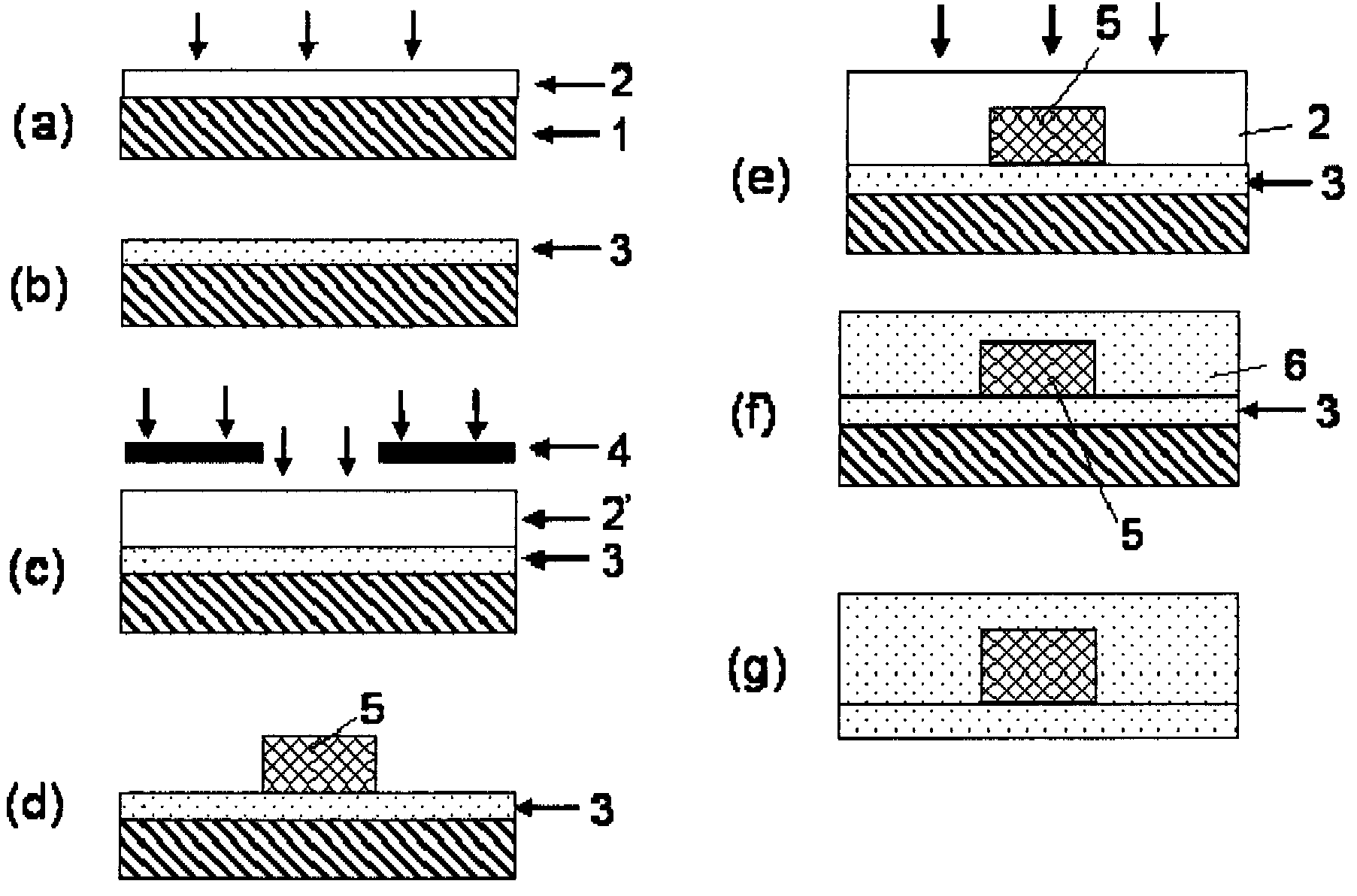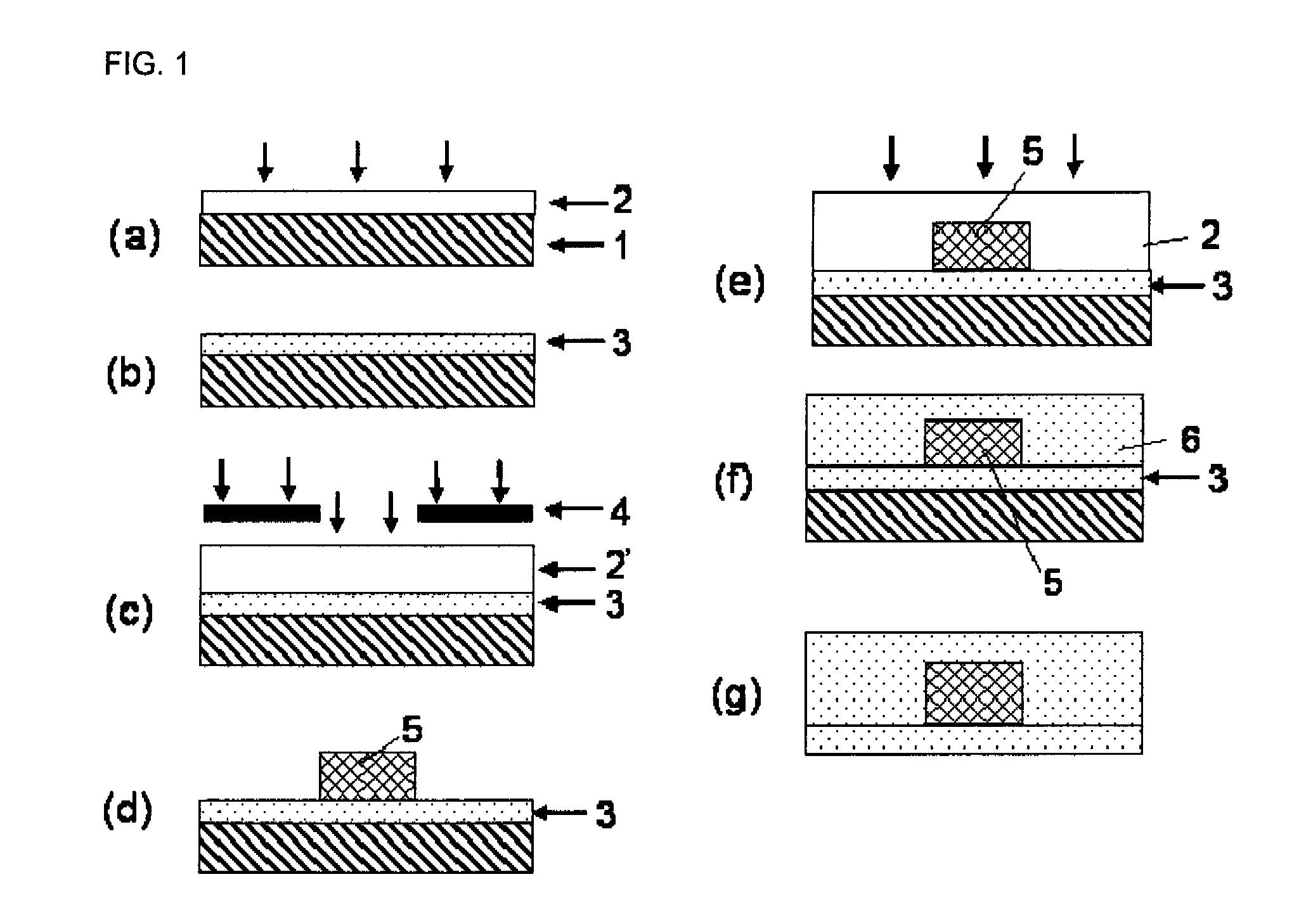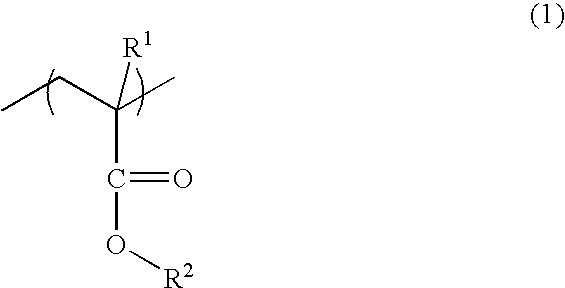Photosensitive resin composition for optical waveguide formation, optical waveguide and method for producing optical waveguide
a technology of optical waveguides and resin compositions, applied in the direction of plastic/resin/waxes insulators, instruments, other domestic articles, etc., can solve the problems of high transmission loss of conventional transmission systems by electric wiring, high processing temperature, and difficulty in producing waveguides with a large area. , to achieve the effect of excellent transmission properties, low propagation loss, and high shape accuracy
- Summary
- Abstract
- Description
- Claims
- Application Information
AI Technical Summary
Benefits of technology
Problems solved by technology
Method used
Image
Examples
synthesis example 1
[0090]A polymer having the following structure, that is, a polymer which contains 50 mol % of the structural unit in which R1 is hydrogen atom and R2 is 3,4-epoxytricyclodecyloxyethyl group in the general formula (1) and 50 mol % of the structural unit in which R3 is hydrogen atom and R4 is a 2,6-norbornanecarbolactone-5-yl group in the general formula (2), was synthesized.
[0091]
[0092]14 g of 5-acryloyl-2,6-norbornanecarbolactone and 17.77 g of 3,4-epoxytricyclodecyloxyethyl acrylate were dissolved in 180 ml of THF, and 1.104 g of 2,2′-azobis(isobutyronitrile) was added to the solution. The resultant mixture was heated to reflux under argon atmosphere for 1 hour. After being left to cool, the mixture was reprecipitated with 1.5 L of methanol, and the precipitated polymer was filtered off. Again, the filtrate was reprecipitated for purification to obtain 27.32 g of the target polymer (yield: 86%). In addition, the polymer was determined to have a weight average molecular weight (Mw) ...
synthesis example 2
[0093]A polymer having the following structure, that is, a polymer containing 30 mol % of a structural unit in which R1 is hydrogen atom and R2 is 3,4-epoxytricyclodecyloxyethyl group in the general formula (1), 40 mol % of a structural unit in which R3 is hydrogen atom and R4 is 2,6-norbornanecarbolactone-5-yl group in the general formula (2) and 30 mol % of a structural unit in which R5 is hydrogen atom and R6 is phenoxyethoxycarbonyl group in the general formula (3), was synthesized.
[0094]
[0095]15.754 g of 5-acryloyl-2,6-norbornanecarbolactone, 15 g of 3,4-epoxytricyclodecyloxyethyl acrylate and 10.908 g of phenoxyethyl acrylate were dissolved in 203 ml of THF, and 1.553 g of 2,2′-azobis(isobutyronitrile) was added to the solution. The resultant mixture was heated to reflux under argon atmosphere for 1 hour. After being left to cool, the mixture was reprecipitated with 1,500 ml of diethyl ether, and the precipitated polymer was filtered off. Again, the filtrate was reprecipitated...
synthesis example 3
[0096]A polymer having the following structure, that is, a polymer containing 50 mol % of a structural unit in which R1 is hydrogen atom and R2 is 3,4-epoxytricyclodecyl group in the general formula (1) and 50 mol % of a structural unit in which R5 is hydrogen atom and R6 is phenoxyethoxycarbonyl group in the general formula (3), was synthesized.
[0097]
[0098]25 g of 3,4-epoxytricyclodecyl acrylate and 21.82 g of phenoxyethyl acrylate were dissolved in 140 ml of THF, and 1.118 g of 2,2′-azobis(isobutyronitrile) was added to the solution. The resultant mixture was heated to reflux under argon atmosphere for 2 hour. After being left to cool, the mixture was reprecipitated with 1,500 ml of hexane, and the precipitated polymer was filtered off. Again, the filtrate was reprecipitated for purification to obtain 40.3 g of the target polymer (yield: 86%). In addition, the polymer was determined to have a weight average molecular weight (Mw) of 9,300 (in terms of polystyrene) and a dispersion ...
PUM
| Property | Measurement | Unit |
|---|---|---|
| wavelength | aaaaa | aaaaa |
| refractive index | aaaaa | aaaaa |
| thickness | aaaaa | aaaaa |
Abstract
Description
Claims
Application Information
 Login to View More
Login to View More - R&D
- Intellectual Property
- Life Sciences
- Materials
- Tech Scout
- Unparalleled Data Quality
- Higher Quality Content
- 60% Fewer Hallucinations
Browse by: Latest US Patents, China's latest patents, Technical Efficacy Thesaurus, Application Domain, Technology Topic, Popular Technical Reports.
© 2025 PatSnap. All rights reserved.Legal|Privacy policy|Modern Slavery Act Transparency Statement|Sitemap|About US| Contact US: help@patsnap.com



